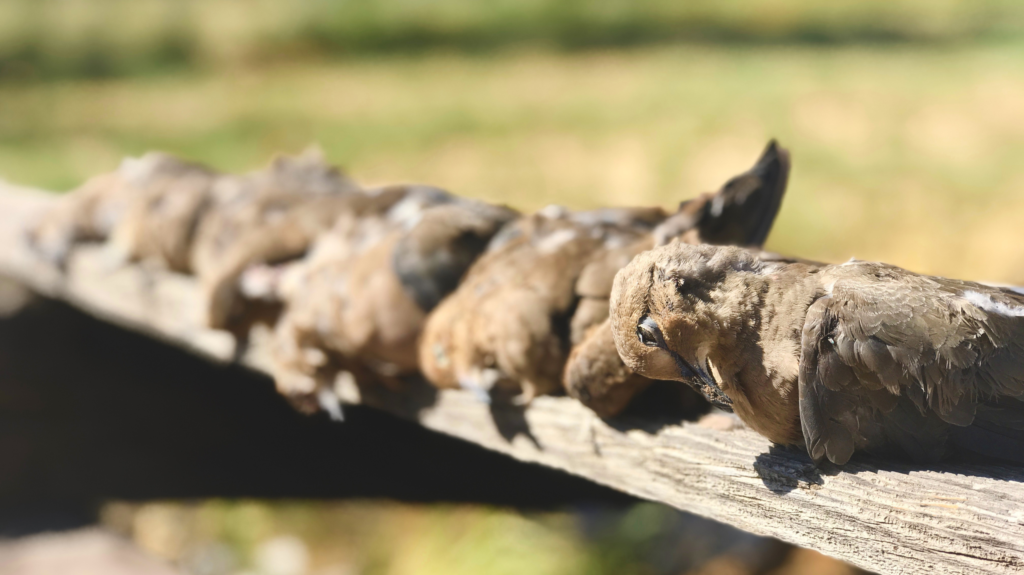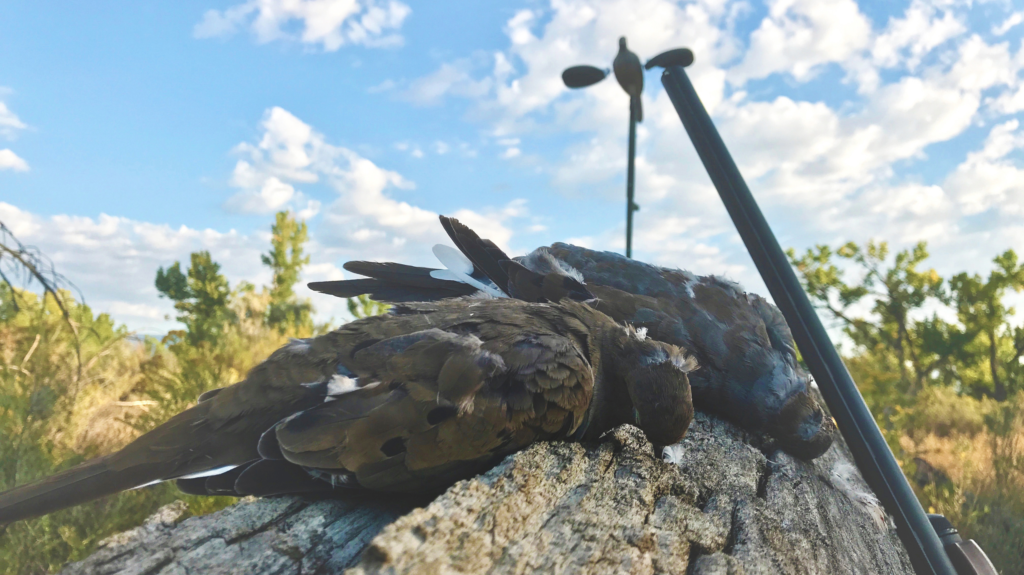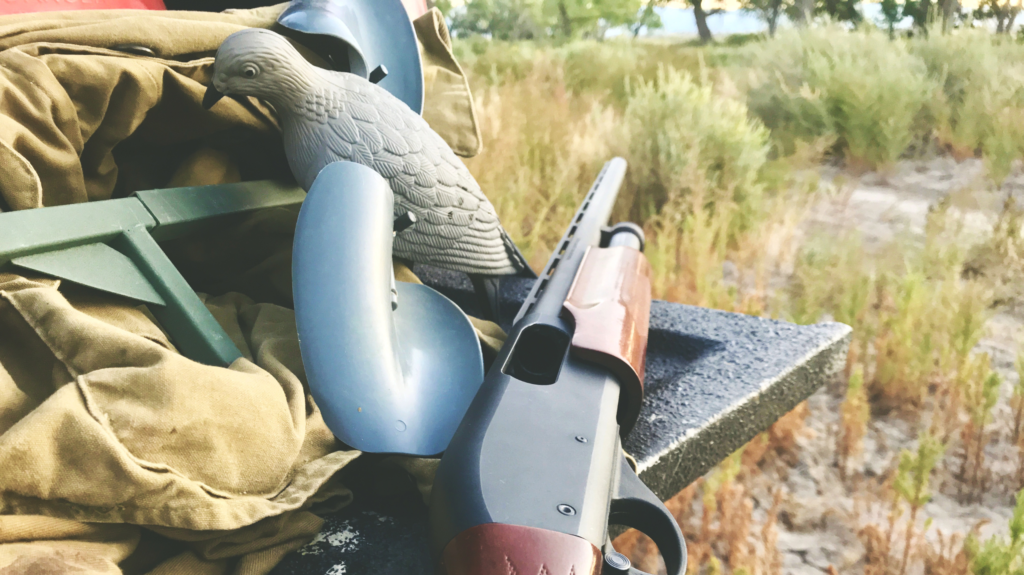In Texas, the start of dove hunting season is, what some would consider, a glorified state holiday. Thousands of hunters head into the field in pursuit of the small, acrobatic, and tasty birds. When it comes to skill, hunting either white wing or mourning dove is notoriously difficult: they’re fast and athletic, bobbing and twisting, and changing speed at a moment’s notice. But there’s a reason nearly 400,000 Texans head out each September to harvest part of this plentiful population – it’s an inexpensive social affair and can be enjoyed by nearly everyone.
Dove hunting can be one of the simplest sporting traditions in Texas to embark on as far as preparation and equipment; however, there are a few things to prepare for and consider as the start of the season approaches. Finding the ideal landscape, locating water sources, and identifying small trees or shrubs for concealment is key to attracting and locating birds. With these three things in mind, your dove hunting experience this fall is sure to be a successful one.

Locating and attracting dove:
If you already have access to your hunting locale, begin scouting the property in August. In Texas, chances are you’re hunting on private land, and if that’s the case, here are a few things to look out for: water sources, dirt or gravel roads, and power lines. Dove need to drink, they use grit from roads to digest their food, and they perch on power lines. These three conditions are good places to find birds, and ideally, your location has all three.
Food:
Grasslands offer great feeding for dove and their habitat with a variety of mixed seeding plants, including millet, barley, grain sorghum, and sunflowers. A helpful hunting tip is to pay special attention to areas where there are a variety of seeding plants; dove enjoy a variety of native and nonnative seeding plants. If there is not an abundance of these plants, consider planting your own food plot for dove. In drought years, food plots can be tough, but in ideal conditions, plant in April and May to allow the seeds to mature and be available for dove a couple of weeks before the season.
Water:
Managing water can help increase dove abundance and improve shooting opportunities. Water sources suitable for doves include ponds, lakes, livestock water troughs, streams, and puddles. The water source likely to attract the most dove is one located between a feeding area with abundant seeding plants and a roost site. Dove prefer to water at ground level with minimal vegetation and seem to have no preference for the quality or clarity of the water. During drought conditions and periods of hotter temperatures, water sources can be a very successful location for hunting, especially when temporary watering holes have dried up.

Concealment
When planning for a successful dove hunt, choosing a good hunting site is as important as managing food, water, and brush.
Dove have exceptional eyesight and typically have a great vantage point for which to use it. Concealing yourself and remaining still is key. Use natural vegetation to your advantage – it’s often considered the best way to conceal yourself from these keen-eyed winged birds. Tuck yourself behind some brush or build a blind of natural materials to ensure a successful hunt.
Not only should the hunting sites be attractive for doves, but also it should also give the hunter a clear field of view to spot the birds as they approach. Make sure your site is open enough so you can track down your fallen birds.
When it comes to concealment clothing, throwing on a camo shirt/hat and neutral-colored pants certainly won’t hurt your hunting endeavors.

Dove decoys
A spinning-winged dove and stationary decoys are great for attracting dove and can “up your game.” Keep in mind that dove can often grow accustomed to the spinning decoys as the season progresses. We recommend starting off the hunt by using a spinner or two near the water to give yourself the tactical advantage of ambushing them as they come.
Once you’ve found your hotspot, studied the land, and have a shotgun with lots and lots of shells, you’re ready for September 1.
Cheers to a successful hunting season and see you in the field!








